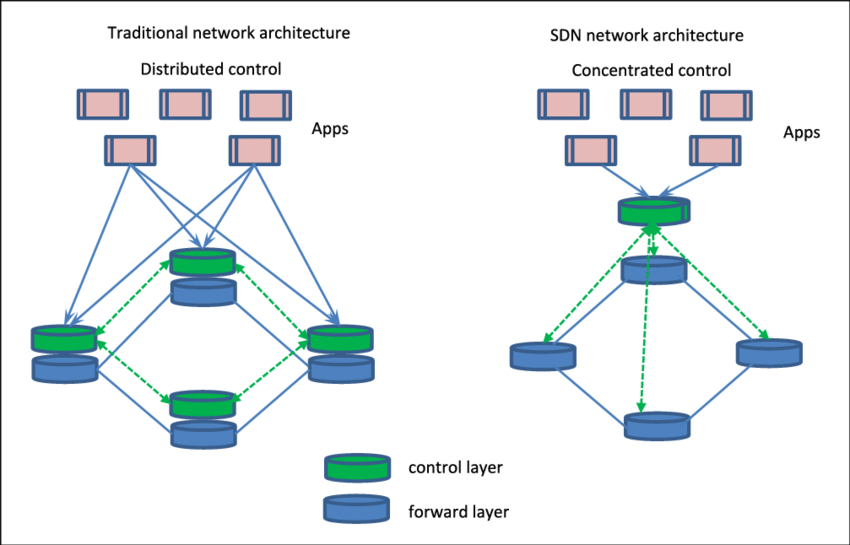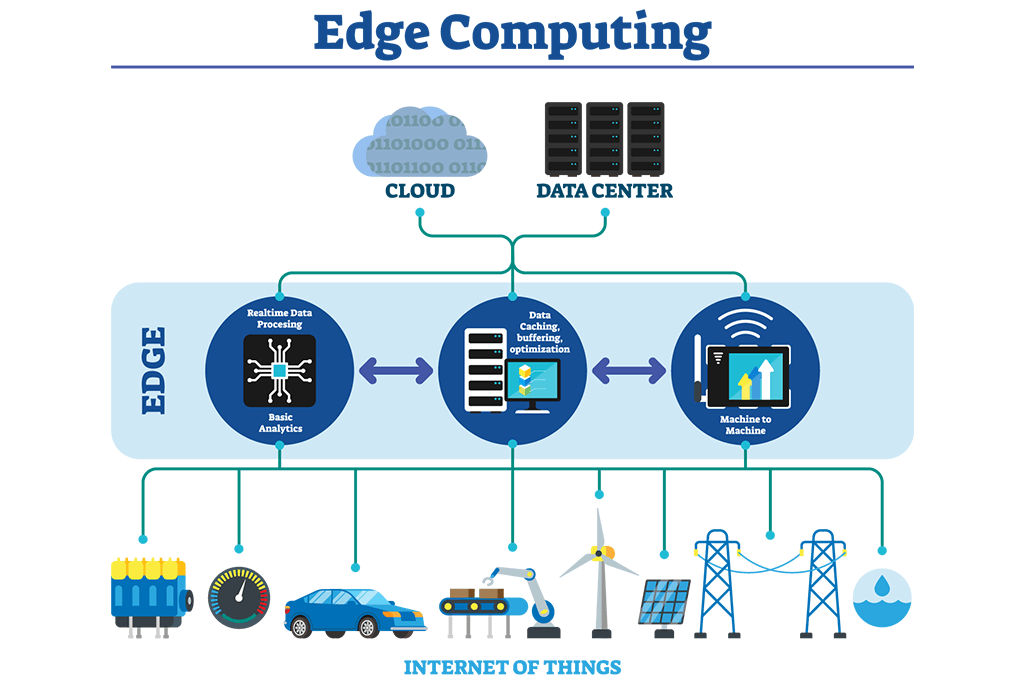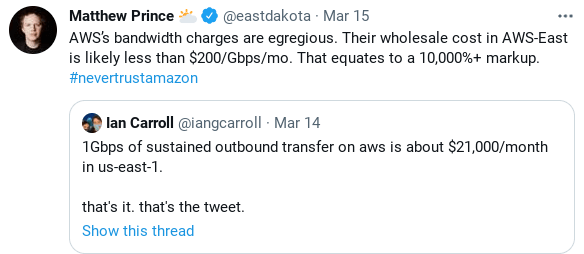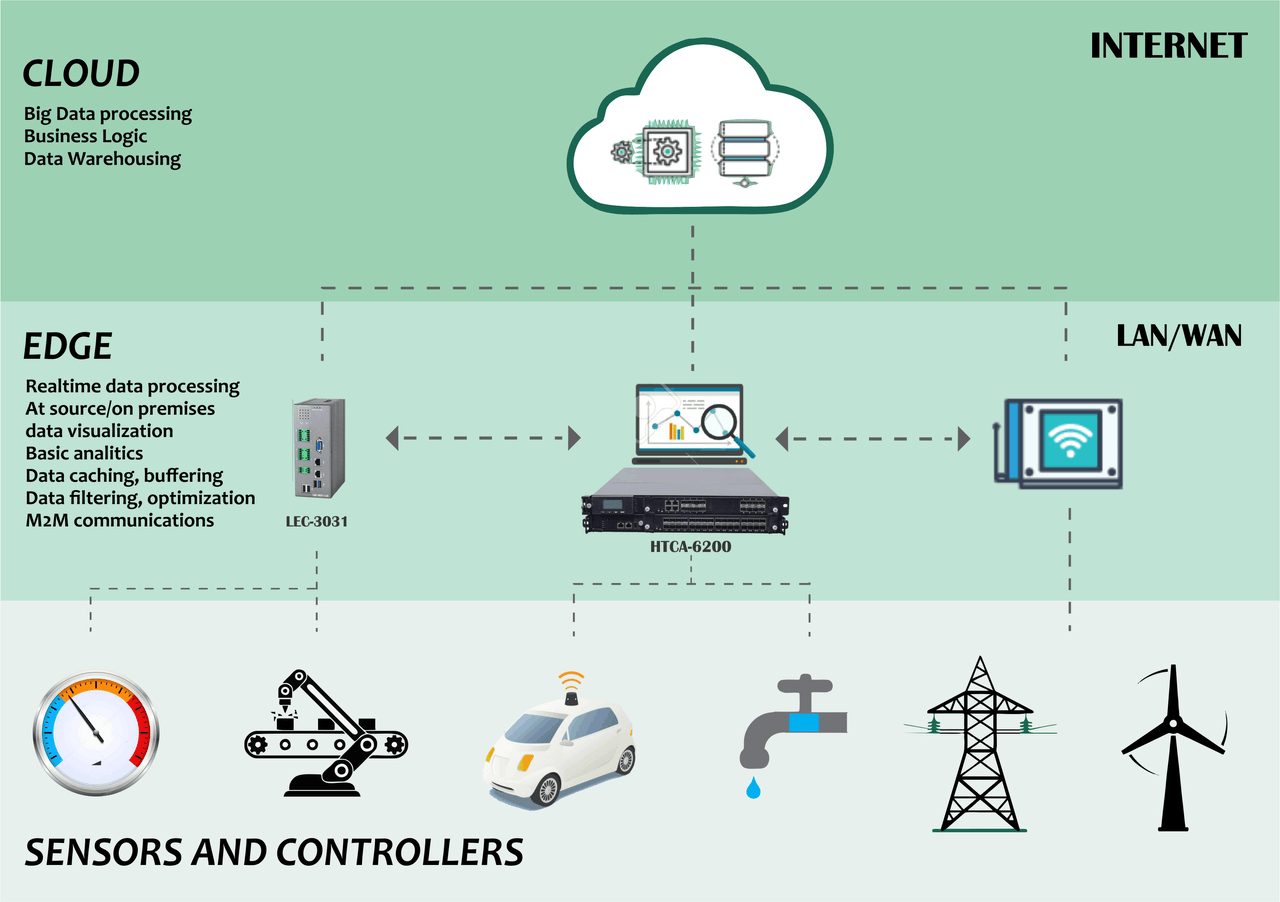Summary
- After my last article, I got a lot of questions about what Cloudflare's moat is. Can it fight off the giants in this space: Amazon, Microsoft, Akamai?
- Cloudflare has a Software-Defined-Networking or SDN, which gives it a much more flexible and programmable network.
- With the Internet of Things about to explode, a huge percentage of data will never leave the edge cloud.

Introduction
Almost two months ago,I published an article about Cloudflare (NET), in which I argued that Cloudflare was worth its premium price. The stock is up about 30% since then but for me, as a long-term investor, the story hasn't changed, so that's not the reason why I write this article.
After that article, I got a lot of questions about the moat of Cloudflare and a lot of people seem to think that Cloudflare can be crushed by the big players in this field. And of course, with giants like Amazon (AMZN), Google (GOOG) (GOOGL), Microsoft (MSFT) and Akamai (AKAM) in this industry, I understand the question.
But Cloudflare is much more than just a CDN network. After 25 years, CDN has become a commodity. Cloudflare has something special to protect it from the giants in this space, though. Of course, they will be there and they will take a certain percentage of the market, together probably a majority even, but that doesn't matter with such a huge market. After all, for the edge cloud, we are about where we were more than a decade ago for the core cloud (AWS, Azure...) and that means very early. The potential is huge.
Before we start, just a quick thought. I think that the term 'moat' has been overused in recent years. A moat is supposed to be impenetrable and there are only very few companies who have that. Mostly they are the biggest companies in our world. So, you could argue that the title should have been Cloudflare's competitive advantage. The reason why I still used the word moat is that most people use that term.
Cloudflare is developer-friendly
There are several CDN providers. Akamai is the big pure legacy player and 1,500 POPs (points-of-presence) and approximately 300,000 servers in 136 countries worldwide. If you know that Cloudflare has about 200 POPs, you could think that there is no way that it can fight Akamai.
But POPs and CDN in general are commodities, cutting-edge technology and that's where Cloudflare is in a league of its own.
The difference between Cloudflare and the rest of the CDNs is that Cloudflare is really developer-focused. I know, you hear that a lot, but I will try to explain what that means in the context of Cloudflare and CDNs. We have to become a bit technical but I will try to simplify without dumbing it down.
SDN
First, you have to understand what SDN means. It stands for software-defined networking and it is a way in which you can manage your network. SDN improves both the network performance as the monitoring.
An SDN architecture separates the network control from the hardware infrastructure. In that way, it's easier to control the whole network. This differs from the older network structure, which is hierarchical. This image shows the difference between the SDN and hierarchical structure.
As you can see, the forward layer (which handles the traffic) and the control layers are separated in an SDN structure.
Because there's so much more data being used in our society, because networks become more and more complex, and because we all expect networks to perform better, a hierarchical structure is becoming more and more something of the past.
SDNs give much more flexibility and control because you can adapt centrally. This means that the whole network becomes directly programmable, instead of all the separate parts individually. This saves a lot of time, of course, and makes sure that updates can be more easily deployed. It makes SDN somewhat similar to cloud computing.
Cloudflare itself gives a great analogy between SDN and hierarchical networking:
Think of the difference between typing an essay on a typewriter and typing it in a word processing application: Any changes to the typewritten essay mean it has to be retyped, while a word processing document can be revised endlessly. Similarly, SDN technology lets admins reconfigure their networks from a computer, instead of continually plugging and unplugging cables and devices.
Edge computing
The difference between Cloudflare and the competition is in how it has constructed the architecture of its POPs (points of presence, the servers that are distributed around the world) and especially the networks in between those POPs. Cloudflare has a structure that makes the network between its POPs programmable too, so-called edge computing.
Edge computing is especially important for the Internet of Things or IoT. These devices generate a huge amount of data. Cloud computing as we know it works great but not for the IoT data flood. IoT devices are easily hackable for example, but there are also performance problems.
Besides those problems, what do you do with the huge amount of data? One solution is to store it in huge data lakes and that's why there is so much excitement around a company like Snowflake (SNOW) for example. But edge computing is better for IoT solutions. It can handle and store the data on the device that generated it and let them interact:
Cloudflare may have fewer POPs but they are built from the ground up as SDN architectures and they are much more powerful, which gives it the flexibility and customizability to have really powerful edge computing.
Competition from the big boys
For the legacy players, Akamai in the first place, but also Amazon, Google, and Microsoft's it's not simple to change their whole infrastructure. Akamai, with its 1,500 POPs and 300,000 servers now has a disadvantage because of that size. It's virtually impossible to start all over again. Akamai, Microsoft, Google and Amazon are all developing their own edge computing capabilities but because of their architectural disadvantages, their edge computing won't perform like that of Cloudflare. Because of Cloudflare's SDN structure, which is much more programmable and flexible, customers have much more control over the entire network, globally, instead of the individual POPs. That's a huge competitive advantage.
Cloudflare foresaw the SDN revolution in CDNs and that's why it has made its servers much more powerful and it needs much fewer POPs than the legacy players in this field. The POPs are much better interconnected too. Cloudflare's co-founder Lee Holloway,that tragic computer genius, has laid the foundations for Cloudflare's flexible architecture and that's why Cloudflare's network has the structure and capabilities it has now.
Amazon's Jeff Bezos has been known to say: "Your profit margin is my opportunity." It seems that Matthew Prince now thinks the same about Amazon's AWS and he's not afraid to show it, in this tweet for example:
The moat and applications
By being a programmable network, Cloudflare can make the typical extra applications of a CDN network faster and especially smarter. I understand that this is vague and that's why I will give some applications that are a consequence of this.
- traffic routing: the network can automatically detect and avoid problem areas, outages, DDoS attacks, etc.
- choosing the best distribution form automatically (cloud, on-prem, multi-cloud)
- making smart routing decisions based on the content form (files, pictures, video, gaming), the location of the end-user, which device is used, etc.
These are just some examples. There are more and with 5G on the horizon, this will only accelerate. There are so many future-oriented solutions that need high-speed internet and big data handling. Again, a few examples.
Autonomous vehicles need to decide in a fraction of a second to stop for an unforeseen maneuver from another car. Ideally, these cars can communicate with each other to avoid collisions but you don't want latency there. Traffic could be much more distributed too, in the way that data traffic is distributed, for example.
The edge could also be crucial for health devices to have constant and fast internet. If someone is monitored for heart problems and his heart fails, every second can mean the difference between life and death. Or think of autonomous robot surgery possibilities. Faster really means better and the edge is faster (and cheaper).
But most of all, the edge will be used for IoT. I know from somebody who works at the computer department of Coca-Cola UK for example that all of their fridges are connected to the edge cloud. They can all be controlled centrally. If one doesn't work, if the temperature of all of them has to be adapted, if one uses more electricity, this can all be seen.
Cloudflare can easily shift strategies because of its lean and flexible underlying structure. Cloudflare opened up its network for 3rd party developers in June of 2017. This is how Matthew Prince, Cloudflare's CEO,announced it:
Prior to today, if you wanted to write code that took full advantage of Cloudflare's global network you needed to be a Cloudflare employee. Our team is able to run code on thousands of servers in hundreds of locations around the world and modify our customers' packets as they flow through our network in order to make their web site, application, or API faster and more secure. Today, we open that access to the rest of the world.
This led to edge computing. Cloudflare already rolled out Cloudflare Workers in 2017. This is what Matthew Prince, Cloudflare's CEO,wrote about Workers a year ago:
We announced Cloudflare Workers nearly three years ago and it's been generally available for the last two years. Over that time, we've seen hundreds of thousands of developers write tens of millions of lines of code that now run across Cloudflare's network.
Just last quarter, 20,000 developers deployed for the first time a new application using Cloudflare Workers.
Fastly has launched Compute@Edge recently too, its edge computing platform. An edge cloud platform exists between the IoT devices and the serversandbetween the servers themselves.
While speed was seen as the killer application at first, Matthew Prince has changed his mind from the reality that he sees. He calls it Matthew's Hierarchy of Developers' Needs:
The beginning of a new era in computing
This is the beginning of a new era of computing and there are many ways in which this could develop. CDNs aren't just meant for fast distribution and security anymore but it becomes a completely programmable network on their own.
Cloudflare clearly has the lead and the first-mover advantage and it is almost impossible for CDNs such as Akamai or Limelight Networks (LLNW) to overtake our Potential Multibaggers for years and years because of their hierarchical structure. Although Amazon and Akamai already have some edge computing capabilities, it won't have the powerful programming capabilities Cloudflare's edge computing because the edge servers are not directly connected to each other.
Edge computing could become, over time, as big as cloud computing now and it will probably take away a part of the market of AWS, Azure and others. Not that those will shrink. The explosion of data will make that most IoT data will never leave the edge. That will become more than half of all data. For requests, this will be even much more.
This transforms all that Cloudflare offers right now, including CDN, into an application, one of the many to come. And that's what is so exciting about this company. The market of edge computing is impossible to calculate as we can't even imagine what the applications will be. Cloudflare will continue to roll out new applications and its customers can build new applications too, just as they can on AWS, for example.
Conclusion
In this article, I tried to explain the competitive advantage that Cloudflare has over the big players in this field. Of course, there is much more to know about the technological advancements in this space but I wanted to give you an overview of the industry and why Cloudflare has a competitive advantage.
This opportunity is simply too big and companies like Amazon, Microsoft and Google will definitely play an important role in this market. But because of its architectural advantage, Cloudflare prevails when it comes to quality and speed. The optionality of its programmable network is much higher than that of other players.
In the meantime, keep growing!






